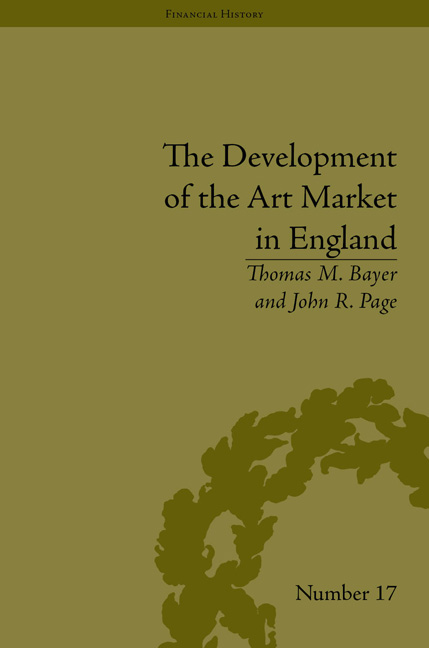Book contents
- Frontmatter
- CONTENTS
- Acknowledgements
- List of Figures and Tables
- Dedication
- Introduction
- 1 The Early Stages: From the Netherlands to Great Britain
- 2 The Commoditization of Theories of Art
- 3 The Painter as Homo Economicus
- 4 Critics and Auctions
- 5 The Evolution of Picture-Dealing
- 6 The Victorian Era
- 7 ‘Working the Oracle’: The Tools of the Trade
- 8 The Formation of a Nexus: A Story of Christie's
- 9 Commoditization and the Artist as Producer: Product Differentiation and the Domestication of Pictures
- 10 The End of the ‘Golden Age’
- 11 Postscript: A Perpetual Innovative Whirl
- Notes
- Works Cited
- Index
10 - The End of the ‘Golden Age’
- Frontmatter
- CONTENTS
- Acknowledgements
- List of Figures and Tables
- Dedication
- Introduction
- 1 The Early Stages: From the Netherlands to Great Britain
- 2 The Commoditization of Theories of Art
- 3 The Painter as Homo Economicus
- 4 Critics and Auctions
- 5 The Evolution of Picture-Dealing
- 6 The Victorian Era
- 7 ‘Working the Oracle’: The Tools of the Trade
- 8 The Formation of a Nexus: A Story of Christie's
- 9 Commoditization and the Artist as Producer: Product Differentiation and the Domestication of Pictures
- 10 The End of the ‘Golden Age’
- 11 Postscript: A Perpetual Innovative Whirl
- Notes
- Works Cited
- Index
Summary
By the mid-1870s, the supremacy of contemporary English painting was in slow decline. In economic terms, the rise and fall of this ‘Golden Age’ were associated in greater proportion with the history of the mass-marketed reproductive print than with any other single factor. Record demand during mid-century occasioned publishers to explore ways to speed up the production process, lower overall costs and increase the size of editions. However, this very prosperity and the resulting market expansion carried the seeds of the downfall of the reproductive print.
As the economics of the print industry changed so did the relevance of many of the related factors that had shaped the appearance of countless original works. Mass appeal, readily apparent labour intensity, high finish, and scrupulous attention to detail lost in importance. Precisely these aspects had delineated much of the style of contemporary pictures of this period. The emerging stylistic changes and new aesthetics coinciding with the decline of the reproductive print market must therefore be considered within the context of the art market's increasing economic diversification.
Not every artist benefited directly from the buoyancy of the print trade. Nonetheless, the resulting market growth spread its largesse far beyond the individual recipients of copyright revenues. The unprecedented growth in the number of professional artists was to a large extent a consequence of the print industry's immense cash infusion into the market.
- Type
- Chapter
- Information
- The Development of the Art Market in EnglandMoney as Muse, 1730–1900, pp. 179 - 202Publisher: Pickering & ChattoFirst published in: 2014



